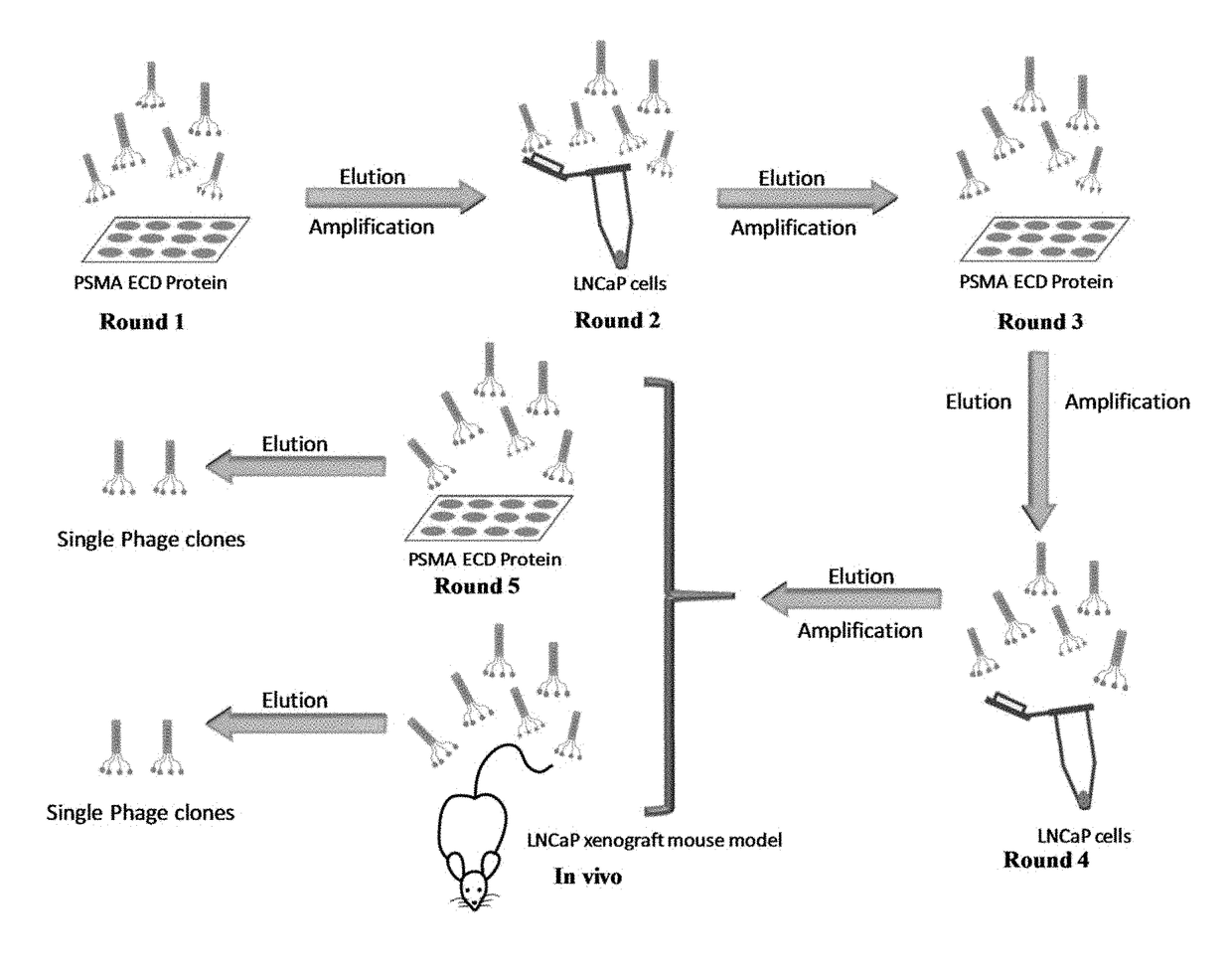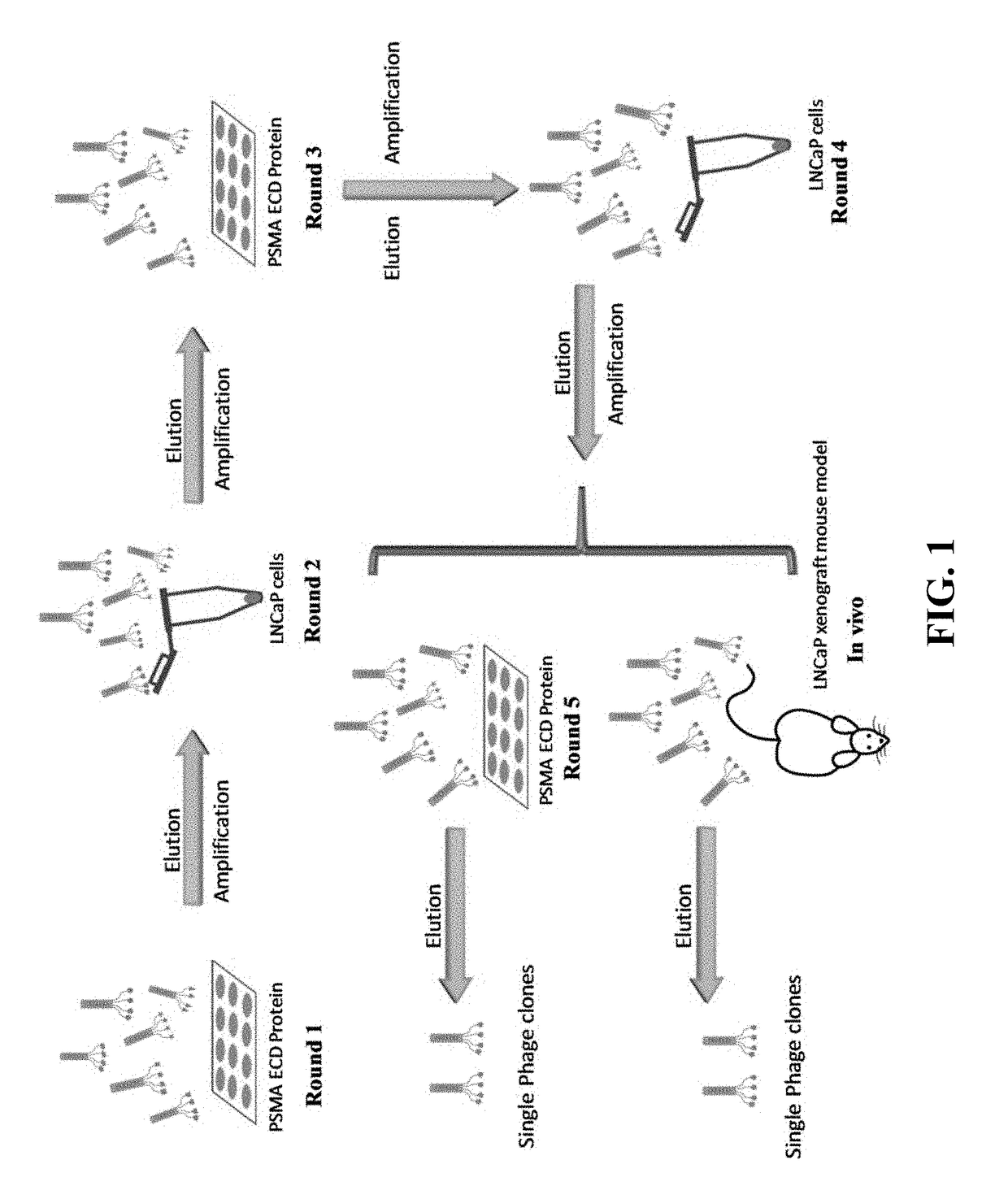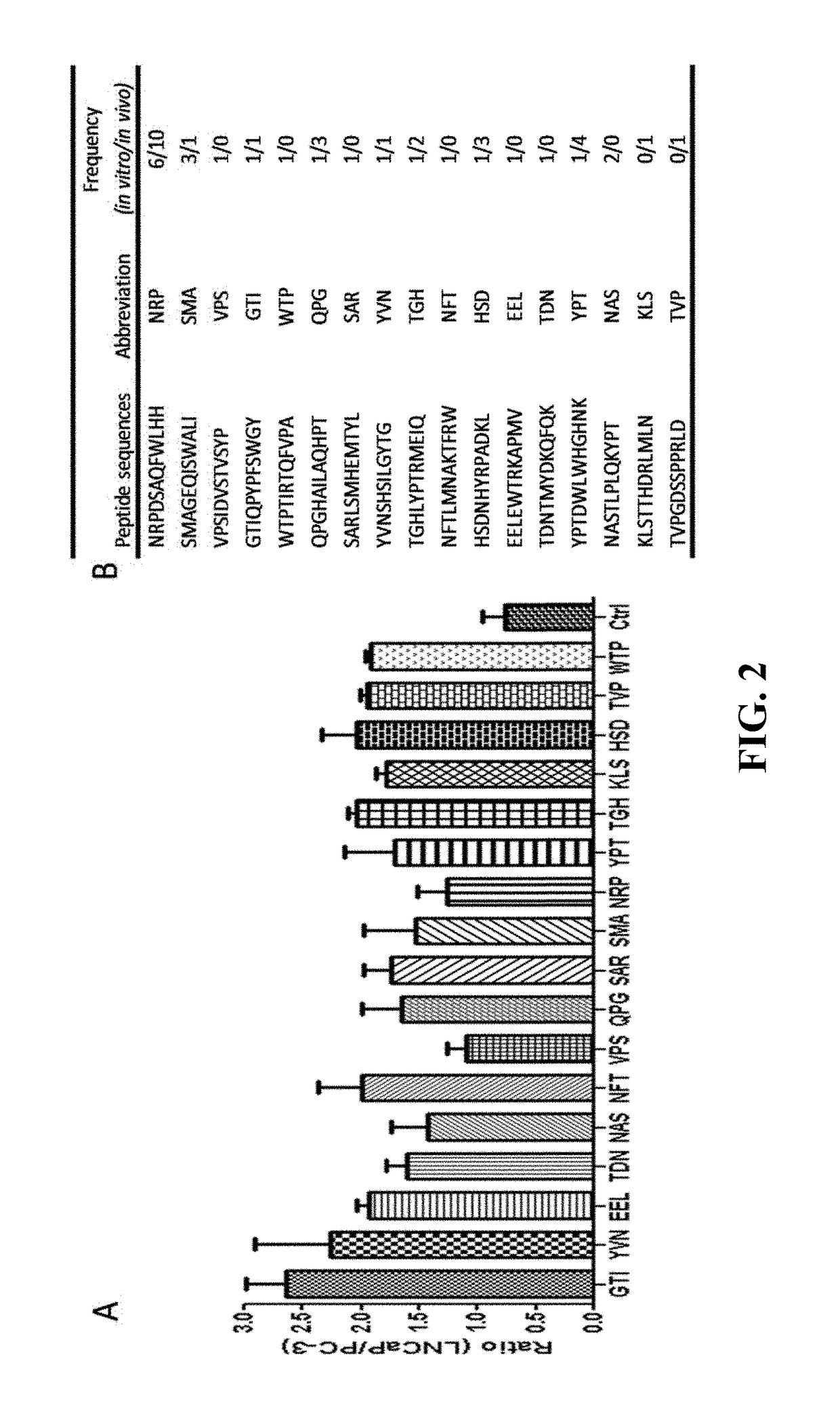Prostate-specific membrane antigen (PSMA) targeting peptides
- Summary
- Abstract
- Description
- Claims
- Application Information
AI Technical Summary
Benefits of technology
Problems solved by technology
Method used
Image
Examples
example 1
[0039]Materials. The Ph.D.™-12 phage display peptide library and E. coli ER2738 were purchased from New England Biolabs (Beverly, Mass.). LNCaP, PC-3, C4-2, CWR22Rv1, and HeLa cells were obtained from American Type Culture Collection (Manassas, Va.). HSC-T6 cell line was kindly provided by Dr. Scott L. Friedman from New York University. D(KLAKLAK)2 peptide was purchased from Anaspec, Inc (Fremont, Calif.). All other peptides including FAM-labeled peptides and GTI-KLA fusion peptides were purchased from United Biosystems Inc (Herndon, Va.). Non-enzymatic cell dissociation solution was obtained from MP Biomedicals (Santa Ana, Calif.). Homozygous nude mice were ordered from The Jackson Laboratory (Bar Harbor, Me.).
example 2
[0040]Cell culture. LNCaP, C4-2, CWR22Rv1 and PC-3 cells were maintained in RPMI-1640 medium with 10% FBS, 100 U / mL penicillin and 100 μg / mL streptomycin. HSC-T6 and HeLa cells were cultured in DMEM medium with 10% FBS and penicillin / streptomycin. The cells were incubated in a 5% CO2-humidified atmosphere incubator at 37° C. and passaged when they reached 80% confluence.
example 3
[0041]Cloning and expression of PSMA ECD. The plasmid pcDNA3.1-PSMA encoding full-length human PSMA was provided by Dr. Shawn E. Lupold (Johns Hopkins University School of Medicine, Baltimore, Md.). PSMA ECD was amplified from the plasmid using the forward primer 5′-ATCAGATCTAAATCCTCCAATGAAGC-3′ (SEQ ID NO: 11) and reverse primer 5′-ATCAAGCTTCTGCACTGTGAAGGCTGCAACATA-3′ (SEQ ID NO: 12). The amplified fragment was excised using BglII and HindIII, purified using a PCR Clean-Up kit, and cloned into the pRSET A vector (Invitrogen, Grand Island, N.Y.) as published (Jia, X., et al., Mol. Pharm., 2007, 4(2):199-207). The pRSET A vector encoding PSMA ECD was transformed into BL21 (DE3)pLysS competent cells. The transformed competent cells were cultured in LB medium, and IPTG was added to induce the expression of PSMA ECD when the OD600 reached 0.5. After four hours of induction, the cells were harvested, lysed, and the expressed protein was collected.
PUM
| Property | Measurement | Unit |
|---|---|---|
| Cell death | aaaaa | aaaaa |
| Ratio | aaaaa | aaaaa |
| Therapeutic | aaaaa | aaaaa |
Abstract
Description
Claims
Application Information
 Login to View More
Login to View More - R&D
- Intellectual Property
- Life Sciences
- Materials
- Tech Scout
- Unparalleled Data Quality
- Higher Quality Content
- 60% Fewer Hallucinations
Browse by: Latest US Patents, China's latest patents, Technical Efficacy Thesaurus, Application Domain, Technology Topic, Popular Technical Reports.
© 2025 PatSnap. All rights reserved.Legal|Privacy policy|Modern Slavery Act Transparency Statement|Sitemap|About US| Contact US: help@patsnap.com



